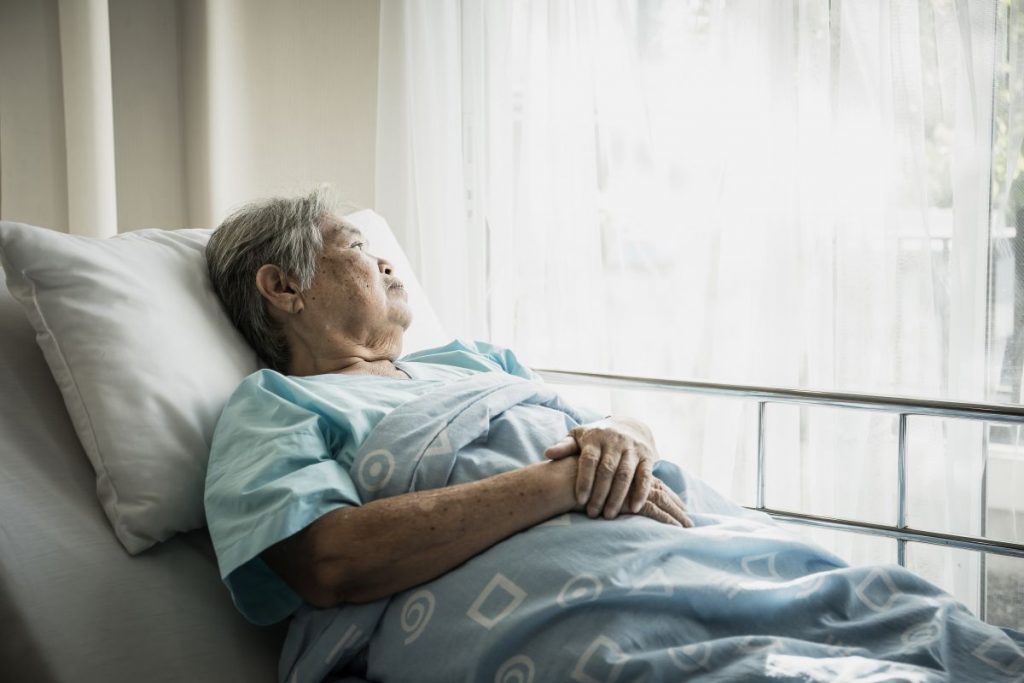Background. Visits from family and friends are vital to the health and well-being of residents in long term care facilities. In addition to providing the social connection and emotional support that all humans need to thrive, visitors provide essential monitoring and care.
Too many residents have been robbed of this essential right at a time when they have needed it most. In March, the Centers for Medicare & Medicaid Services (CMS) blocked visitation for nursing home residents except “for certain compassionate care situations, such as an end-of-life situation.” Sadly, many facilities have misinterpreted this to mean only at the very end of life. Perversely, this has resulted in many residents dying alone.
COVID-19 has decimated residents in nursing homes nationwide and led to more than 43,000 fatalities in long term care facilities. Countless more residents are suffering and dying from other causes; gross neglect, substandard care, loneliness, and “broken hearts.” Numerous reports have indicated that facilities are failing to deliver basic services – even sufficient nutrition and hydration.
It’s Time to Let Our People In. Residents have gone without access to friends and families for too long. Nursing homes are not hospitals or M.A.S.H. units, and they are not settings where people are supposed to go or stay in an emergency. That we have allowed facilities to operate for months on end with only limited government oversight and without accountability for grossly insufficient staffing or services – all while cutting off residents from families – is utterly unacceptable.
Nursing homes are paid – and legally and morally obligated – to have sufficient staffing, personal protective equipment (PPE), and other supplies to meet the needs of their residents at all times. These requirements were not excused for the duration of the coronavirus pandemic, and it is inexcusable that CMS and state health departments have essentially given the nursing home industry a vacation from accountability while residents have suffered and died.
Following are our recommendations for restoring residents’ rights to visitors in a sensible and safe way until residents’ longstanding rights to have visitors in their homes are fully reinstated.
Blueprint for Restoring Residents’ Rights to Essential Visitors.
1. Every resident has the right to designate at least one Support Visitor in Person (SVIP).
- The SVIP can be a family member, friend, or other individual chosen by a resident to visit on-site and provide emotional and other support.
- If the resident lacks capacity, the resident’s representative has the right to designate the SVIP.
- Policies and practices (whether facility or government-based) must provide for both safety and reasonable accommodations of SVIP visitation, including:
- A reasonable number of visitation hours every day.
- Schedules provided in advance to residents, families, the local LTC Ombudsman Program, and posted in the facility, at the facility’s public entrance, and on any website utilized by the facility (including home page, Facebook page, and/or listserv).
- Access to visits indoors and outdoors (weather permitting).
- Accommodating and respecting the privacy of residents during visits.
- Ensuring SVIP access and accommodations to residents of all floors.
- For indoor visits, facilities may limit visitation to the resident’s room (if resident is in a private room) or a designated visiting area and ensure sanitation before and after visits.
- Assuring compliance with all reasonable infection control precautions, as set forth in writing by the facility or state, including but not limited to: use of masks and other PPE (as appropriate); health and symptom screening; and social distancing from staff, other residents, and the resident being visited (as appropriate).
- Prioritization, in respect to time and frequency, of access to visitation in end-of-life and other compassionate care situations.
- Educating staff, residents, and SVIPs on the risks of the spread of COVID-19 and the appropriate/applicable safety precautions.
Additional Notes & Resources. This blueprint is based on a variety of published safety protocols and recommendations. However, we would especially like to recognize the California Advocates for Nursing Home Reform’s “Support Person Visitor Policy.” Facilities are encouraged to maintain, and where possible enhance, virtual visitation options such as FaceTime, Skype, and Zoom.
For more information about COVID-19 in nursing homes, visit LTCCC’s Coronavirus Resource Center on our homepage, www.NursingHome411.org. Our organization would like to hear about your experiences during this time. Please send your stories to feedback@ltccc.org.
Long Term Care Community Coalition
www.nursinghome411.org
One Penn Plaza, Suite 6252
New York, NY 10119
United States
Contact Dalli & Marino LLP

Please contact our team to discuss your case, or with any questions, at 1-888-465-8790 [Toll-Free], or by completing the CASE EVALUATION Form on our Contact Page.



